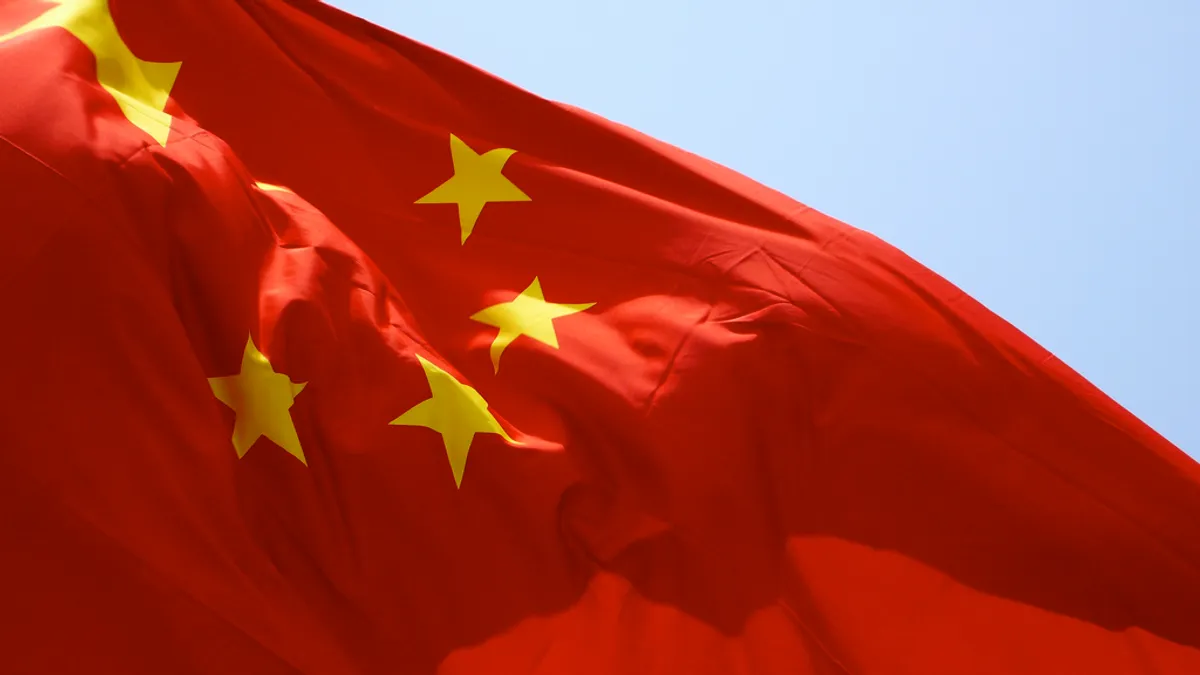Dive Brief:
- In response to a tariff hike on $200 billion worth of Chinese imports, China will raise the tariff rate on $60 billion worth of U.S. imports beginning June 1, according to a Monday morning announcement from Chinese Ministry of Finance.
- The $60 billion of goods currently face a tariff of 5% or 10%. The tariff rate on about 2,500 products will rise to 25%, and the rate on another 1,078 products will rise to 20%. 974 items will face a tariff rate of 10%, and 595 goods will be taxed at 5%.
- In a separate announcement Friday evening, the U.S. Trade Representative Robert Lighthizer said in a statement his office will "begin the process" of putting tariffs on all Chinese imports that remain untaxed. These goods are valued around $300 billion. The fourth round of tariffs requires a 60-day public comment period before implementation.
Dive Insight:
The escalating trade war between the U.S. and China will require import and export supply chains to plan accordingly for a shift in costs, supply and demand.
On the export side, China's list of products that would face 25% tariffs includes animal and food products, minerals, fibers, machinery, toys and furniture. Although retaliatory tariffs from China have less of an impact on the U.S. economy than U.S. tariffs on Chinese goods, the agriculture industry faces significant risk. Higher duties on animal and food products could make U.S. exports of these goods less appealing to Chinese buyers, creating even higher stockpiles for farmers and lowered prices.
On the import side, implementing tariffs on the remaining $300 billion worth of goods from China would affect nearly every industry that imports anything from China, from a small component to a finished product.
The Trade Partnership estimated tariffs on all remaining imports, plus Chinese retaliation, would decrease GDP growth by 1% and cost the average family of four $2,294 annually.
While many businesses planned for the possibility of a tariff hike to 25% on $200 billion worth of Chinese imports, it's unlikely companies planned their supply chains around tariffs on another $300 billion worth of goods. "I think companies falsely relaxed a little bit hoping for an agreement," Maine Pointe CEO Steve Bowen told Supply Chain Dive.
He said many U.S. companies lack optionality, which builds multiple supplier options into the value chain and allows for quick shifts.
In Monday morning tweets, Donald Trump once again suggested businesses shift their sourcing. "The Tariffs can be ... completely avoided if you by from a non-Tariffed Country, or you buy the product inside the USA (the best idea). That’s Zero Tariffs," he wrote in a series of tweets.
Some businesses moved sourcing, in some cases from China to Vietnam, while others found it more cost effective to continue sourcing from China with the 10% tariffs in place.
"As this tariff moves to 25%, the equation will change quite significantly," Bowen said. China may no longer continue to be the least expensive option. "This will tilt the scale for companies to begin to make many more moves and change the supply base," Bowen said.
Changing suppliers is certainly not a change that happens overnight. Bowen gave the example of a client with about 30 facilities worldwide that has just started a full network optimization study, which would include risk mitigation from tariffs. The study would result in a five- to 10-year long plan. "This kind of shift in supply chain ... this is a years-long process," Bowen said.
Tariffs on $300 billion would require a public comment of at least 60 days, presenting businesses with a two-month buffer period to conduct cost analyses and adjust their supply chains. Anticipation of this fourth round of tariffs could result in another rush to import goods before the levies take effect.
"Call it a couple months, call it three months, I don't know. Ambassador Lighthizer can detail that," White House Economic Advisor Larry Kudlow told Chris Wallace on Fox News Sunday, in response to a question of when the tariffs on $300 billion might take effect. "But that will take some time and then of course the president is going to have to make the final decision on that."
In the interview, Kudlow also said there's a "strong possibility" Trump and Chinese President Xi Jinping would meet at the G20 summit in Japan in late June. Their last meeting in December at the G20 summit in Buenos Aires, Argentina, resulted in a 90-day cease-fire on the trade war and delayed a planned tariff hike.














